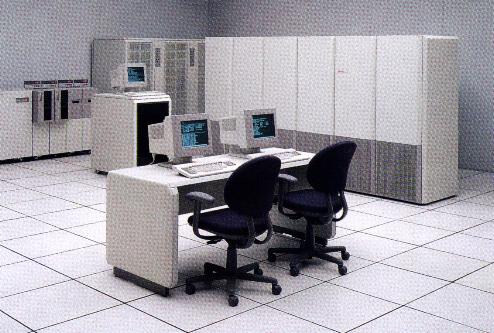
The Unisys A-19 Mainframe Computer
System
Mainframes operate at very high speeds and
support main input and output devices that also operate at very high
speeds. They can be subdivided into small, medium, and large systems.
Most mainframes are manufactured as "families" of computers. A family
consists of several mainframe models varying in size and power. An
organization can purchase or lease a small system and, if processing
needs expand, upgrade to a medium or large system. Purchase prices
range from $200,000 to several million dollars for a large mainframe
with peripherals. Mainframes are used chiefly by large businesses,
hospitals, universities, and banks with large data processing needs
(see Figure below).

The Unisys A-19 Mainframe Computer
System
A mainframe requires special installation and maintenance procedures. It creates a fair amount of heat, so it requires a cooling system. A mainframe cannot be plugged into a standard electrical outlet; it needs special electrical wiring. It may rest on special platforms so that wires and cables can be housed beneath it. Furthermore, a mainframe runs day and night and provides access to a large amount of data. Because this access needs to be controlled, users must implement some type of security system. All these factors add to the cost of using a mainframe.
Mainframe computers are sold or leased and can include support from the vendor. The vendor can invest considerable time and money in helping a customer select and install a mainframe. Once the system is installed, the vendor spends additional effort training the customer's employees from top executives to clerical workers to use the system, servicing and repairing the mainframe, and solving questions and problems that arise periodically. Major mainframe manufacturers are IBM, Unisys, Honeywell, and National Cash Register (NCR).